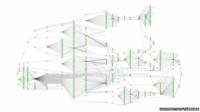19 January 2015
Last updated at 01:23
By Sean Coughlan Education correspondent, BBC News A leading private school, with some of the best results in England, is publishing digital textbooks which are available to download free online.
The Stephen Perse Foundation in Cambridge is publishing 12 multimedia textbooks for IGCSE biology.
They are being made available on Apple's iBooks online store to use on iPad tablet computers.
It is believed to be the first UK school to publish free online textbooks covering an entire exam syllabus.
Schools and pupils are "hungry" for such digital resources, says principal Tricia Kelleher.
With the exam revision season approaching, the Cambridge school is pioneering the publication of its own bespoke textbooks, which will be open to anyone without charge.
School publishing This first set of books will cover the Cambridge IGCSE biology course, with touchscreen, multimedia explanations, covering topics such as molecules and enzymes and animal nutrition.
The textbooks will be available for download worldwide and cover a course taken by 500,000 students in 160 countries.
The school, the current Independent School of the Year, has already made resources available online through iTunes U. It has been a leading innovator of the idea of schools using digital technology to produce their own customised course materials.
"It's important to us that these resources are being offered to the world without charge. There is a world of learning and we want to continue to be at the hub of this approach," said Ms Kelleher, the principal.
"The reception that we have received for bringing nearly 100 iTunes U courses to the world has been tremendous.
"It's about helping teachers to deliver the lessons that they have always wanted to, but now the technology allows it to happen."
Tablet computers The school has been a proponent of using technology in lessons, every pupil in the school has their own iPad which they can use to access the school's online resources, produced and updated by their own staff.
"Traditional textbooks are so much more limited with static content that is often not up-to-date," says Daniel Edwards, the school's director of innovation and learning.
He says it is a "real bonus" to have materials produced by teachers for the specific needs of their own students with a particular course specification.
The author of the textbooks is biology teacher Alex van Dijk, who says the "ability to make instant updates is invaluable. No more need to re-print or wait for a new edition".
In terms of whether there will be a wider range of subjects and textbooks, senior teacher Simon Armitage says it "feels a little bit like looking at the starting years on Wikipedia".
"For the future we see digital resources as being integral to how teachers teach and how students learn. We want our students to use the very best resources whether they are digital or traditional.
"However, the flexibility of digital resources is hard to beat, so we do see that it will be likely that more subjects will be producing resources along these lines."
A study from the National Literacy Trust and Pearson, published last month, suggested that touchscreen computers were particularly useful in helping boys and poorer pupils to learn to read.
It showed children in poorer households were particularly likely to read on touchscreen computers rather than printed books.
Another study from Ofcom last year showed how tablets have spread quickly within families with children. About 70% of five to 15-year-olds had access to a tablet at home.



